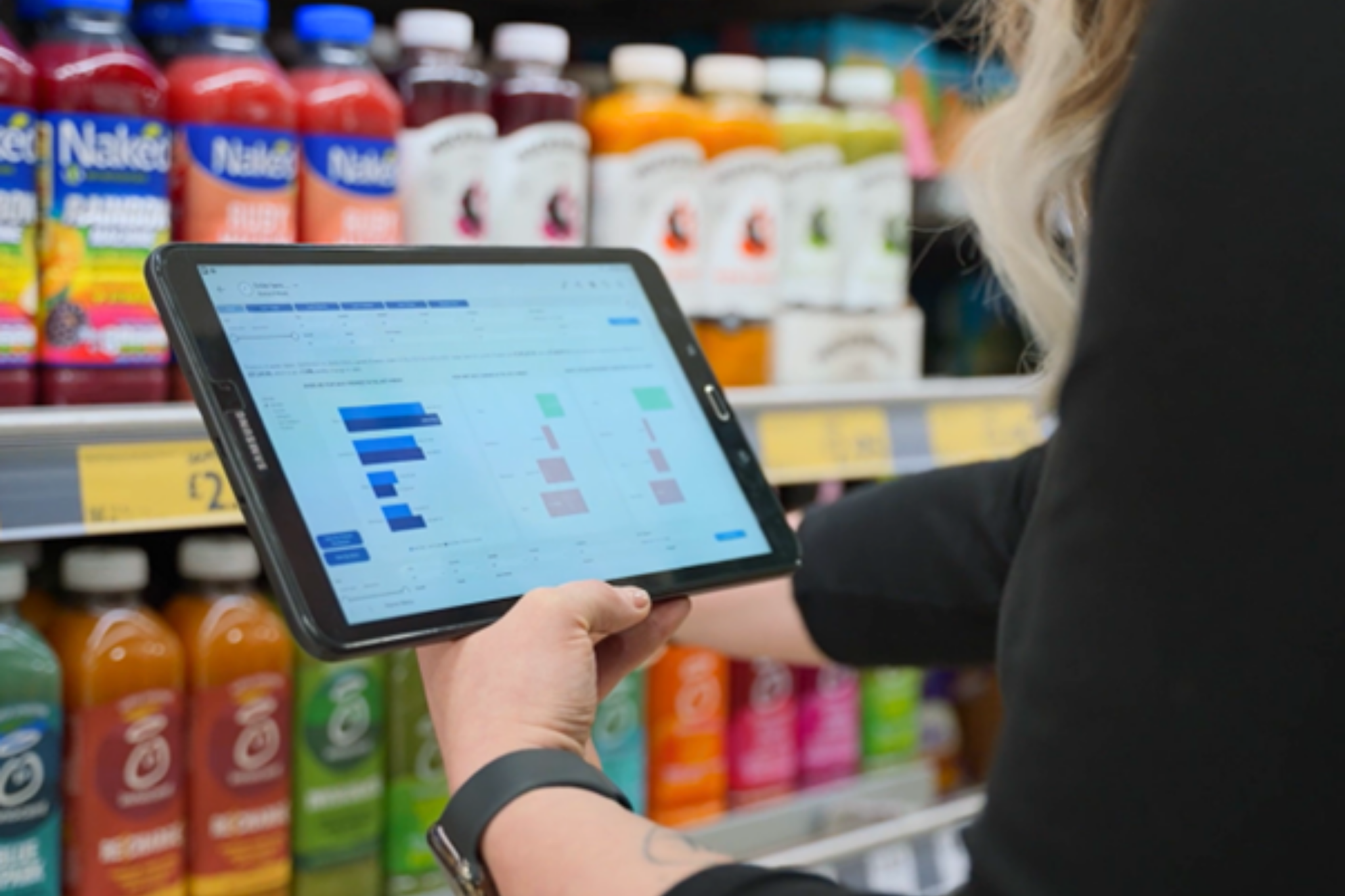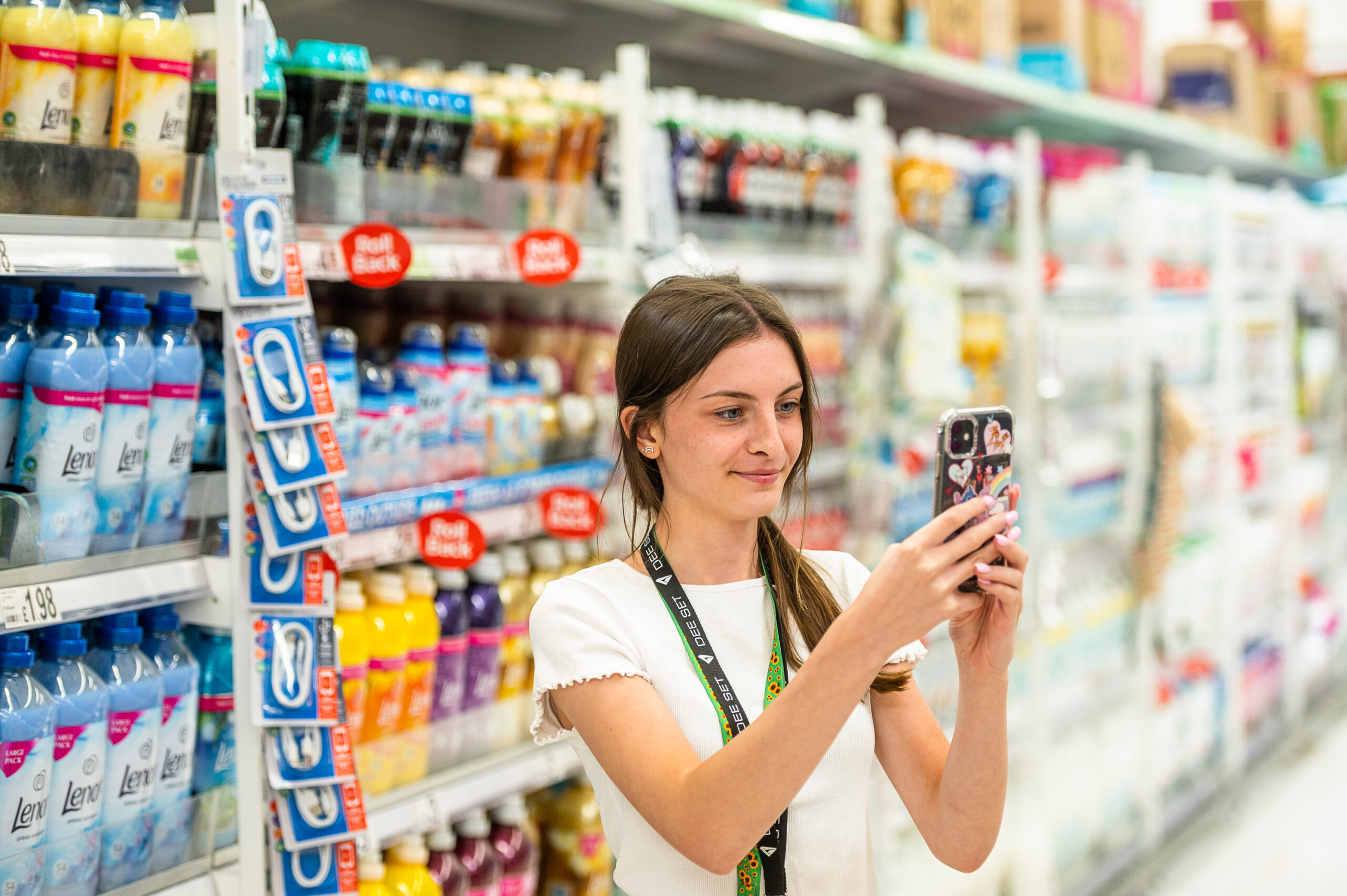If you want to make your brand successful, keeping ahead of modern retail technology trends is crucial. The retail world is constantly changing, with modern retail tech able to reduce costs, improve the customer experience, and boost productivity across the board.
But knowing where to start can be a minefield, which is where Reapp comes in. We’re an offshoot of the award-winning Dee Set Group, able to put our tech to good use to boost the stature of every brand that works with us.
If you’d like to see how we can help your brand, why not get in touch?
Predicting future trends with data analytics: How do we do it?
So, how do we predict future technology trends with data analytics?
Two words: Predictive analytics.
Predictive analytics is a form of retail analytics that allows brands to use data insights, statistical algorithms, and other machine learning tactics to identify patterns and predict future trends and changes. When brands utilise the power of predictive analytics, they can analyse large data sets and make informed data-driven decisions to stay ahead of the competition.

In this blog post, we have a closer look at the future of retail technology trends in the UK. We also speak to Business Sales Lead Matt Blencowe who provides further insight into why adopting a data-centric approach can help brands and retailers to achieve new heights.
Q: How does the quality and quantity of data impact the effectiveness of predictive analytics?
Matt: For predictive analytics to be reliable, the source of high-quality data must be both accurate and consistent. Inaccurate, incomplete or outdated data can consequently lead to unreliable outcomes.
For brands looking to stay ahead of the curve by predicting trends, relevant data is essential as it helps to minimise noise, helping your model’s ability to identify significant patterns so that you can take the appropriate actions. This will help you to make better decisions when it comes to your business. High-quality data will also allow for robust training, validation, and testing, ensuring that the model generalises well to new, unseen data.
The colossal rise of AI
In recent years, AI (artificial intelligence) has come to the forefront of the business world, having various applications for retail brands and businesses.
AI machine learning programs are becoming increasingly integral to modern retail operations, allowing retailers to understand consumer behaviour better, optimise the supply chain and even create new ways to personalise the in-store shopping experience.
But the world of artificial intelligence doesn’t stop there! AI-powered chatbots and virtual assistants can be used to solve common customer queries and assist with purchases, providing an instant solution for shoppers. AI-driven algorithms and image recognition tools can be enacted to create personalised shopping experiences and product recommendations.
We predict that this form of retail tech is only set to grow in stature over the next few years!
Q: How do AI-driven tools like chatbots and virtual assistants improve the customer experience?
Matt: With today’s consumers seeking even more personalisation, AI-driven tools like chatbots and virtual assistants can be a great tool in enhancing customer experience by providing instant and efficient support. They are available 24/7, which means that they can help to reduce wait times, consequently improving customer satisfaction.
They can also gather and analyse customer data to provide tailored recommendations and solutions, further enhancing the user experience. Additionally, their ability to learn and improve over time ensures continuous enhancement in service quality. They can be a great tool in streamlining processes. Ultimately they are a great tool for customer loyalty and retention.
An e-commerce mandate: The new retail sale standard
Whilst retail stores are still popular in some areas, the e-commerce world has been steadily increasing. In 2022, online sales within the UK saw their highest growth since 2007, with sales increasing by an impressive 36%. As technology increases and more people become connected to the internet, we expect to see e-commerce sales rise even further in 2024.
Of course, this doesn’t mean that you should ditch the in-store shopping experience completely. Nevertheless, if you want your brand to reach new heights of success, you need to take advantage of the online shopping world. Nowadays, modern consumers expect the speed, flexibility, convenience, and variety that the e-commerce sector provides, allowing consumers to shop around the clock wherever they are.
You can integrate AI and machine learning features into your e-commerce logistics, allowing you to create a personalised shopping experience with tailored recommendations and targeted promotional campaigns. Payment retail technology has also advanced in recent years, with more secure options available for today’s shoppers.
Q: How can retailers balance the benefits of e-commerce with the traditional in-store shopping experience?
Matt: Integration is key when it comes to creating a seamless and complementary customer experience that utilises both the in-store and ecommerce world.
Enhancing the customer journey is essential to enable consumers to move effortlessly between online and offline services like “click and collect”, “reserve online” and try on in-store”. By adopting a data-centric approach, brands and retailers can use the data from these interactions to personalise in-store experiences, bridging the gap between channels, offering personalised recommendations, targeted promotions, and loyalty rewards.
Enhancing the in-store experience with digital innovations like augmented reality and self-checkout kiosks help to draw in the consumer by keeping them engaged and helping to navigate common issue like in-store wait time. It’s important that consistent branding and messaging across both platforms is in place to ensure a unified shopping experience. Engaging with customers through social media and online platforms can drive in-store traffic via events, exclusive in-store promotions, and product launches. By combining the convenience and data-driven insights of e-commerce with the tactile and personalised aspects of in-store shopping, retailers can create a cohesive, satisfying experience that maximizes the strengths of both channels.
The impact of omnichannel tools on the shopping experience
Another retail industry trend to consider is the introduction of omnichannel retail tools, which enable customers to interact with multiple sales and media channels at once.
The retail sphere has largely been driven online in recent years, but there are still a few advantages that the in-store experience can bring. For example, the ability to touch, test, smell and interact with items before committing to a purchase is a major benefit to in-store shopping that the online market cannot match. The gratification of being able to open a product straight after purchase is also another benefit when compared to shopping online.
Omnichannel tools are the ultimate retail toolkit, combining the online and in-store experience, giving customers the best of both worlds. A unified commerce platform can be created, integrating several sales channels into one, including physical stores, online shops, and even mobile apps. More flexible and convenient shopping options can be created too – for example, if a customer wants to test an item in person, you could provide them with the option to order it straight to their door the same day.
The future of retail won’t be confined to either the online or in-store experience. Instead, it will be a seamless hybrid version that integrates the best of both worlds.
Q: How can data analytics improve the effectiveness of omnichannel retail strategies?
Matt: Data analytics can ensure that your omnichannel retail strategy is a success. Thanks to the actionable insights that data provides, you’ll benefit from making better business decisions.
Analysing data from various channels helps retailers understand customer behaviour and purchasing patterns. This means that they have a greater chance of creating quality tailored targeted marketing efforts across all channels. With this data, brands and retailers can also evaluate the performance of marketing campaigns across different channels enabling the refinement of strategies to maximize ROI by focusing on the most effective channels and tactics.
Data analytics can also help retailers and brands to track stock and inventory levels to ensure products are available where and when customers want them. Additionally, Implementing data-driven dynamic pricing strategies allows for real-time price adjustments based on demand, competition, and other factors, enhancing sales and profitability.
Introducing dynamic pricing models: A true game-changer
It’s probably fair to say that the current economic climate within the UK is challenging, for both retailers and shoppers. Whilst the inflation rate has fallen recently, the cost of living crisis has still hit people hard, with many customers finding themselves unable to afford the rising price hikes.
In the face of this struggle, more and more retail brands are turning to pricing automation, with between 25-30% of all British retailers integrating dynamic pricing methods into their business. Dynamic pricing retail tech enables retailers and brands to change their pricing structure based on current trends and predicted forecasts. Think about it – if sales of a particular product have dropped because people are unable to afford it, reducing the price can push customers back on board.
Everyone loves a bargain, and dynamic pricing models can also be used to effectively curate retail shopping experiences, creating tangible promotional offers. If a particular holiday season is on the horizon, prices of items commonly bought during the period can be either increased or decreased based on forecasted demand.
Q: What are the benefits of dynamic pricing for both retailers and consumers?
Matt: For retailers, dynamic retailing has the potential to increase revenue by allowing prices to be adjusted based on demand, competition, and other relevant factors.
By generating data-driven insights into customer behaviour and market trends, brands and retailers can benefit from better pricing and marketing strategies. For consumers, dynamic pricing can lead to potential savings, as they benefit from lower prices during off-peak times or promotional periods.
Dynamic pricing also allows for personalisation, with consumers receiving tailored offers and discounts based on their shopping habits and preferences. Improved availability of popular items is another advantage, as dynamic pricing helps ensure efficient restocking.
Finally, prices that reflect real-time supply and demand create a fairer and more efficient market environment meaning that overall, dynamic pricing creates a win-win situation by optimising revenue and inventory for retailers while providing consumers with better prices and product availability.
Q: What steps should a retailer take to start incorporating predictive analytics into their business?
Matt: To incorporate predictive analytics, a retailer should first define clear business objectives, such as optimising inventory, enhancing customer experience, or increasing sales. They then need to gather relevant historical and real-time data from sources like sales transactions, customer behaviour, and supply chain operations.
Additionally, choosing the right predictive analytics tools and platforms, such as SAS, IBM SPSS, or open-source options like R and Python, is crucial. Building a team of data scientists, analysts, and domain experts will facilitate the development and implementation of predictive models. Ensuring data quality through cleaning and preprocessing is also essential to eliminate inconsistencies and fill gaps.
Developing predictive models using machine learning algorithms should start with simple models, advancing to more complex ones as needed. Validating these models with historical data ensures accuracy and reliability. Deploying the models into business processes and systems makes them accessible to relevant stakeholders.
Finally, continuous monitoring and updating of model performance is necessary to maintain accuracy. However the key is training staff on using predictive analytics tools and then interpreting those results to ensure that they can then make informed business decisions.
Use data to your advantage with Reapp
As you can see, retail technology trends are your key to bountiful success, enabling you to push your brand to the spotlight in no time! By using predictive analytics to your benefit, you can integrate AI and machine learning tools into your business, introduce dynamic pricing models, and create the perfect shopping experience through the use of omnichannel tools.

Don’t just take our word for it though – at Reapp, we’re always one step ahead of the retail trends in the UK, using our retail data science techniques to boost every brand that works with us.
Want to find out more about our retail reporting tools and data analytics tech? Book a demo with the Reapp team today!
